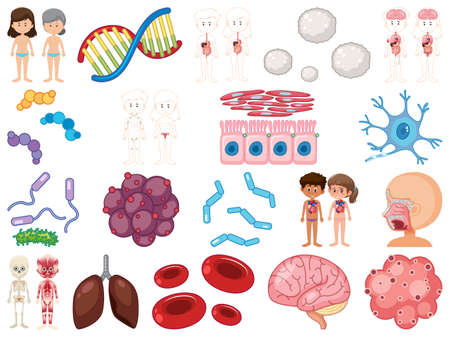1. Introduction to Fat Freezing
Fat freezing, known scientifically as cryolipolysis, has emerged as a groundbreaking technology in the landscape of non-surgical body contouring. Originally developed through laboratory research, this method leverages controlled cooling to target and eliminate stubborn fat cells without the need for invasive procedures. The technology’s primary appeal lies in its ability to deliver noticeable results with minimal downtime, making it an attractive alternative for individuals seeking to enhance their physique without undergoing surgery.
In the UK, there is a growing interest in aesthetic treatments that align with a busy lifestyle while offering reliable outcomes. Fat freezing caters perfectly to this demand, providing a discreet and efficient solution for those wishing to address localised fat deposits that are resistant to diet and exercise. Its popularity continues to rise across the country, particularly among residents who value modern innovation, safety, and convenience when considering cosmetic enhancements. As high street clinics increasingly adopt this technology, fat freezing has firmly established itself as a staple in Britain’s body contouring market.
2. Origins: The Science Behind Fat Freezing
The journey of fat freezing, also known as cryolipolysis, began in laboratory settings where scientists sought non-invasive alternatives to traditional fat reduction procedures. This pioneering approach was born out of meticulous observation and scientific curiosity, particularly into the effects of cold temperatures on adipose (fat) tissue. Researchers noticed that fat cells are more susceptible to cold than other surrounding tissues, a phenomenon initially observed in children who developed dimples in their cheeks after eating ice lollies—a condition termed “popsicle panniculitis.” This intriguing discovery laid the groundwork for a new era of body contouring science.
Key Milestones in Laboratory Innovation
Year |
Scientific Breakthrough |
Significance |
|---|---|---|
| 1970s | Observation of “popsicle panniculitis” in paediatric cases | Revealed selective vulnerability of fat cells to cold exposure |
| 2005 | Harvard University research team initiates controlled studies on cryolipolysis | Establishes the foundational mechanism and safety profile for targeted fat reduction |
| 2008-2010 | Development and patenting of early cryolipolysis devices | Paves the way for clinical trials and regulatory approvals globally, including the UK |
The Scientific Mechanism Explained
Cryolipolysis works by delivering precisely controlled cooling to fat deposits beneath the skin, without damaging skin or surrounding tissues. The cold triggers a process known as apoptosis—programmed cell death—specifically in adipocytes (fat cells). Over time, these crystallised fat cells are naturally processed and eliminated by the body’s lymphatic system. Rigorous laboratory testing ensured that this process targets only unwanted fat while maintaining the integrity of skin and muscle tissue.
From Bench to Bedside: Laying the Foundation for Clinical Use in the UK
The robust scientific foundation established in laboratories has been critical to the safe adoption of fat freezing technologies across UK clinics. Early research not only ensured efficacy but also shaped best practices for treatment protocols, device calibration, and patient selection. Today’s UK practitioners benefit from decades of evidence-based advancements, transforming a once-novel laboratory innovation into a trusted high street service for individuals seeking non-surgical body sculpting solutions.
![]()
3. Clinical Trials and Early Adoption
The journey of fat freezing from a scientific breakthrough to a trusted aesthetic treatment on the UK high street was shaped significantly by rigorous clinical trials and key regulatory milestones. Early studies, primarily conducted in the United States and Europe, sought to validate the safety and efficacy of cryolipolysis. Pioneering trials assessed not only the reduction in subcutaneous fat but also monitored for adverse effects, consistently demonstrating that controlled cooling could selectively target fat cells without damaging surrounding tissue.
As clinical evidence mounted, regulatory bodies such as the Medicines and Healthcare products Regulatory Agency (MHRA) in the UK began to scrutinise these procedures. Gaining MHRA approval marked an essential turning point, instilling confidence in both practitioners and potential clients. This regulatory endorsement ensured that devices met stringent safety standards, paving the way for broader adoption across reputable medical and cosmetic clinics.
Within the medical community, initial skepticism gradually gave way to acceptance as peer-reviewed publications reinforced the procedure’s effectiveness. Esteemed British dermatologists and plastic surgeons began to explore fat freezing as a non-invasive alternative to traditional liposuction, particularly for clients seeking minimal downtime. Simultaneously, cosmetic clinics on UK high streets started offering cryolipolysis, often emphasising its clinically proven results and regulated status to attract a wider clientele.
The combination of robust clinical data, regulatory oversight, and endorsements from respected healthcare professionals collectively legitimised fat freezing within the UK’s competitive aesthetic market. This foundation of trust allowed fat freezing treatments to flourish—not just as a passing trend but as an established service synonymous with scientific credibility and client satisfaction.
4. Arrival on the UK High Street
The journey of fat freezing from its origins in clinical research to its prominent presence on British high streets is a testament to the UKs dynamic aesthetic industry and consumer-driven demand for non-invasive cosmetic solutions. Initially, cryolipolysis was confined to medical clinics, performed under strict supervision by healthcare professionals. Its effectiveness in targeted fat reduction and minimal downtime quickly captured the attention of both practitioners and patients. However, it was not until recent years that fat freezing became widely accessible, migrating from exclusive medical environments to mainstream beauty and aesthetic clinics across the UK.
This transition was influenced by several factors unique to the British market:
| Factor | Impact on Fat Freezing’s Popularity |
|---|---|
| Regulatory Framework | The UK’s clear regulatory guidelines allowed non-medical practitioners to offer certain aesthetic treatments, provided they adhered to safety standards. |
| Consumer Demand | British consumers increasingly sought out non-surgical body contouring options, especially those with proven results and minimal recovery time. |
| Clinic Accessibility | Aesthetic chains and independent beauty salons recognised a lucrative opportunity to attract new clientele by offering cutting-edge treatments like fat freezing at competitive prices. |
| Cultural Shifts | The growing emphasis on self-care and body confidence fostered a welcoming environment for innovative procedures that blend wellness with aesthetics. |
As a result, high streets in cities such as London, Manchester, and Birmingham began featuring clinics equipped with advanced fat freezing devices. Treatments were no longer the preserve of private medical practices; instead, they became part of everyday beauty routines for Britons seeking subtle enhancements. This shift also prompted a rise in practitioner training programmes and greater public awareness regarding the importance of choosing qualified providers.
5. Technology Improvements and Modern Devices
As fat freezing has evolved from a scientific breakthrough to a widely accessible treatment across the UK, technological advancements have played a pivotal role in shaping the patient experience. Early cryolipolysis machines, while effective, were limited in both precision and comfort. Today’s state-of-the-art devices feature refined applicators tailored for different body areas, enhanced temperature control systems, and more efficient cooling cycles. These innovations not only improve results but also minimise discomfort and reduce recovery time.
UK clinics adhere to stringent safety protocols established by regulatory authorities such as the Care Quality Commission (CQC) and the Medicines and Healthcare products Regulatory Agency (MHRA). Devices used in British clinics are rigorously tested for safety and efficacy, with practitioners undergoing specialised training to ensure correct application and patient care. This regulatory oversight provides peace of mind for clients, distinguishing UK practices from less regulated international markets.
Patients now benefit from shorter treatment sessions, customisable plans, and a significant reduction in side effects such as bruising or numbness compared to earlier procedures. The integration of digital monitoring systems allows practitioners to adjust parameters in real time, ensuring optimal results while safeguarding client wellbeing. Overall, these advancements have made fat freezing a mainstream option on the UK high street, offering predictable outcomes with minimal interruption to daily life.
6. Cultural Impact and Acceptance in the UK
Fat freezing, also known as cryolipolysis, has experienced a notable cultural integration within the UK, reflecting broader British attitudes towards body image, wellness trends, and cosmetic procedures. Traditionally, British society has maintained a conservative stance on aesthetic treatments, with surgical interventions often viewed as drastic or reserved for celebrities. However, the advent of non-invasive options like fat freezing has shifted public perception considerably.
Today, fat freezing is embraced as a discreet and practical solution for those seeking subtle body contouring without downtime or significant risk. This aligns well with the British preference for understated enhancements rather than dramatic transformations. The rise of wellness culture across the UK—emphasising self-care, healthy living, and balanced lifestyles—has further bolstered the popularity of treatments that promise natural-looking results and minimal disruption to daily routines.
The cosmetic industry in Britain has adapted swiftly to these evolving expectations. High street clinics now offer fat freezing alongside other advanced aesthetic services, making it more accessible and de-stigmatised. British consumers increasingly view such treatments as an extension of personal grooming rather than vanity or extravagance. Influencers and media coverage have also played a pivotal role in normalising fat freezing, sharing real experiences and demystifying the process for a broader audience.
Nevertheless, public perception remains nuanced. While many appreciate the technological advancements and convenience, there remains a degree of scepticism regarding efficacy and long-term safety—reflective of the typically cautious British approach to new trends. Regulatory oversight and transparent information from reputable clinics are therefore highly valued by prospective clients.
Overall, fat freezing’s acceptance in the UK is characterised by pragmatism and measured enthusiasm. Its integration into mainstream cosmetic culture speaks volumes about changing attitudes: Britons are increasingly open to embracing modern solutions for confidence and wellbeing, provided they align with values of authenticity, discretion, and trustworthiness.
7. Future Outlook for Fat Freezing in the UK
As fat freezing continues its journey from cutting-edge laboratory innovation to a mainstay of high street aesthetic clinics, the future landscape in the UK looks both promising and dynamic. Professional predictions indicate that the evolution of fat freezing will be shaped by a combination of regulatory refinement, technological advancement, and shifting consumer expectations unique to the British market.
Regulatory Developments and Safety Standards
The UK’s robust regulatory framework is expected to become even more comprehensive as fat freezing technologies proliferate. Anticipated updates from bodies such as the Care Quality Commission (CQC) and Medicines and Healthcare products Regulatory Agency (MHRA) will likely focus on practitioner qualifications, patient safety protocols, and transparent marketing claims. This increasing oversight aims to ensure that treatments offered on the high street meet stringent standards, reinforcing public confidence while reducing risks associated with unregulated providers.
Technological Innovations Tailored to British Consumers
Technological progress remains at the heart of fat freezing’s evolution. Future devices are predicted to offer enhanced precision, reduced treatment times, and customisable settings to suit diverse body types and lifestyle needs prevalent within the UK population. Integration with digital health platforms may enable practitioners to monitor client outcomes remotely, supporting a more personalised approach to aftercare—a trend already gaining traction in London’s leading clinics.
Emergence of Combination Therapies
Experts foresee a rise in multimodal treatment packages, where fat freezing is combined with other non-invasive modalities such as radiofrequency or ultrasound. Such offerings are anticipated to cater to clients seeking holistic body contouring solutions—a demand reflected in the growing sophistication of UK aesthetic consumers.
Market Trends: Accessibility and Ethical Marketing
The democratisation of cosmetic procedures is set to continue, making fat freezing accessible across wider demographics, not just exclusive to major metropolitan centres like London or Manchester. Simultaneously, British consumers are increasingly discerning about ethical marketing and evidence-based results. Clinics that invest in staff training, transparent communication, and patient education are likely to thrive in this evolving landscape.
Conclusion: A Forward-Thinking Industry
The outlook for fat freezing in the UK is defined by a commitment to safety, innovation, and patient-centric care. As regulations tighten and technologies evolve, clinics that adapt swiftly—while maintaining integrity and professionalism—will play a pivotal role in setting new standards for body contouring on the British high street.

